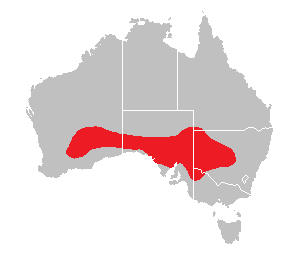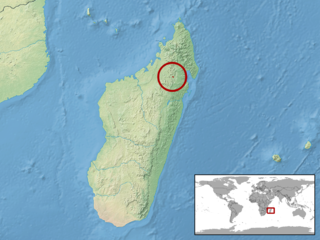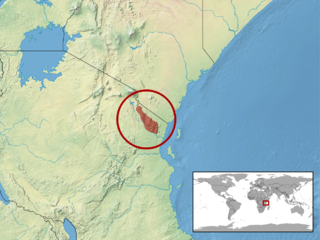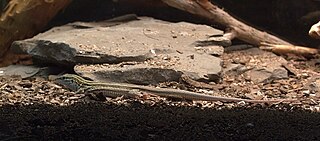 W
WAnolis occultus, the dwarf anole or Puerto Rican twig anole, is a species of Anolis lizards that is endemic to Puerto Rico. It is also called the limestone anole. Its habitat includes places like the Toro Negro State Forest in central Puerto Rico.
 W
WThe Barahona amphisbaena is a species of worm lizards found in Hispaniola.
 W
WThe Central American mud turtle, also known as the narrow-bridged mud turtle, is a species of mud turtle in the Kinosternidae family endemic to Central America. It can be found in the following countries: Costa Rica, Nicaragua and Panama. In terms of reproduction, the female Central American mud Turtle can lay up to 4 eggs at time of reproduction, and multiple times a year.
 W
WCtenophorus fordi, commonly known as the Mallee dragon, Mallee military dragon, or Mallee sand-dragon, is a species of agamid lizard occurring in the arid parts of southern Australia. The Mallee Dragon was named after Dr. Julian Ralph Ford (1932-1987). Dr. Ford was an ornithologist, herpetologist, and chemist who work at the Western Australian Museum. He collected the lizard holotype and many of the paratypes.
 W
WCtenophorus rubens, commonly known as the reddening sand-dragon or rufus sand dragon, is a species of agamid lizard occurring in the arid sandy areas of shrublands and spinifex of the Exmouth Gulf and the adjacent interior of Western Australia, with an isolated population also occurring in the sand dunes south of Hamelin Pool, Western Australia. It was formerly considered to be a subspecies of C. isolepis.
 W
WLygodactylus tuberosus is a species of gecko endemic to southwestern Madagascar.
 W
WThe Malagasy dwarf gecko, also known commonly as Klemmer's dwarf gecko, is a species of gecko, a lizard in the family Gekkonidae.
 W
WThe Mount Ivohibe gecko is a species of gecko endemic to southeastern Madagascar.
 W
WThe ornate dwarf gecko is a species of gecko endemic to Madagascar.
 W
WPasteur's dwarf gecko, also commonly known as Arnoult's gecko, is a species of gecko, a lizard in the family Gekkonidae. The species is native to Madagascar.
 W
WThe Pilbara dtella is a species of gecko endemic to Australia.
 W
WRhoptropus diporus is a species of lizard in the family Gekkonidae. The species is endemic to Namibia.
 W
WThe blue-headed forest skink is a species of skink found in Indonesia.
 W
WSphenomorphus haasi is a species of skink found in Malaysia and Indonesia.
 W
WThe Usambara dwarf gecko is a species of gecko endemic to the Usambara Mountains in Tanzania.
 W
WThe Virgin Islands dwarf sphaero, Virgin Gorda least gecko, or Virgin Islands dwarf gecko is a species of gecko and also one of the smallest terrestrial vertebrates. It has only been found on three of the British Virgin Islands: Virgin Gorda, Tortola, and Moskito Island. It was discovered in 1964 and is suspected to be a close relative of Sphaerodactylus nicholsi, a dwarf sphaero from the nearby island of Puerto Rico. It shares its range with the big-scaled least gecko (S. macrolepis), which is found in leaf litter. Unlike this larger gecko, the Virgin Islands dwarf sphaero lives on drier hillsides, yet prefers moist microhabitats found under rocks because it lacks the adaptations necessary for preventing water loss, which is a significant problem due to its small body size.
 W
WThe western dwarf gecko is a small species of gecko, a lizard in the family Gekkonidae. The species is endemic to Madagascar.
 W
WThe desert grassland whiptail lizard is an all-female species of reptiles. It was formerly placed in the genus Cnemidophorus. A common predator of the whiptail lizard is the leopard lizard, that prey on A. uniparens by using ambush and stalk haunting tactics. These reptiles reproduce by parthenogenesis. In this process, eggs undergo a chromosome doubling after meiosis, developing into lizards without being fertilized. However, ovulation is enhanced by female-female courtship and "mating" (pseudo-copulation) rituals that resemble the behavior of closely related species that reproduce sexually.
 W
WWilliams' mud turtle is a species of turtle in the family Pelomedusidae. The species is endemic to Africa.